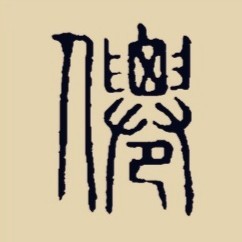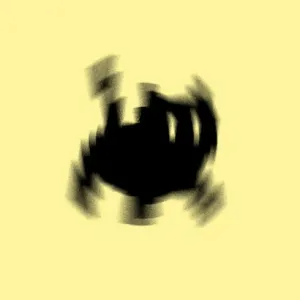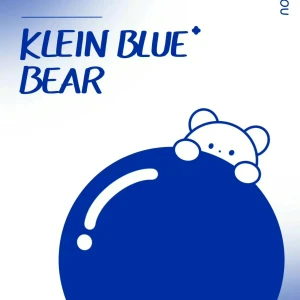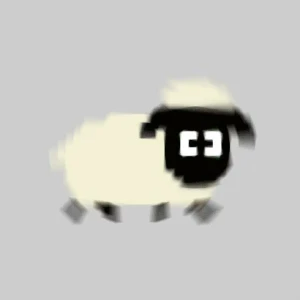the summer class请问 为何要 要用 taught
不是 teach
 LocCloud
LocCloud-
仅供参考:
一般来讲,是老师讲课教学。
在这句话中,剩下的章节课程,将会在暑假班里教大家。
很明显,是课程做主语,所以谓语动词需要使用被动语态,即teach——>taught。
暑假班,是在暑假,还没有到来,所以使用一般将来时。
 wpBeta
wpBeta-
The remaining chapters will be taught during……这句话的主语是the remaining chapters,对于该主语(剩下的章节)而言,是被教,所以应该用被动语态。这是一般将来时的被动语态,故用will be+动词的过去分词,teach 的过去分词是taught,所以用taught 不用teach。
 里论外几
里论外几-
The remaining chapters will be taught during the summer class.
剩下的章节将在暑期课程中讲授。
这是一个一般将来时被动语态句式,基本结构是will+be+动词的过去分词,taught是teach的过去分词。
 meira
meira-
剩下几章是被教,所以需用被动语态。be+动词的过去分词
 皮皮
皮皮-
remaining在这里是形容词,意思是剩下的。
taught是teach的过去式和过去分词
这里的be+过去分词表示被动,章节只能被教而不能主动的教
 Chen
Chen-
be 后面加形容词或者动词的被动形式,所以要用taught
 gitcloud
gitcloud-
will be taught
是一般将来时态的被动语态
 snjk
snjk-
为什么用一般将来时态,原因是将来发生的,标志词是remaining,taught是被动语态。
 S笔记
S笔记-
剩余的章节将在暑假讲授。(被讲,所以用被动)
 北境漫步
北境漫步-
被动式,课是被人来教的,不是有生命能力的
 黑桃云
黑桃云-
课与教之间是被动关系,自然用被动语态。
如何用英文表示文章分段用的“篇、章、节”?
chapter,章section,节paragraph,段落chapter读音:英[ˈtʃæptə(r)],美[ˈtʃæptər]释义:n. (书的)章,篇,回;(人生或历史的)时期,时代,篇章;主教座堂全体教士;宗教团体的全体成员;其他:复数:chapters词源:直接源自古法语的chapitre,意为书的一部分。近义词section读音:英[ˈsekʃn],美[ˈsekʃn]释义:n.部分;部门;部件;散件;节;款;项;段;v.切开;切断;做(动物或植物组织)切片;(依法令精神病人)强制入院治疗;例句:The report can be conveniently divided into three main sections.这份报告不用费事就可划分为三个主要部分。其他:第三人称单数:sections 复数:sections 现在分词:sectioning 过去式:sectioned 过去分词:sectioned2023-01-11 05:39:126
什么是章节
[zhāng jié] 章节章节是文章的组成部分,通常一本书分为若干章(一章相当于一篇文章),一章又分为若干节(一节是一个自然段或几个自然段)章节说明文章的组成部分,通常一本书分若干章,一章又分若干节。英文解释简明释义chapters and sections;chapter;section ;详细释义chapters and sections网络释义part中文详细解释章和节。长篇文章在结构上的部分和段落。一般为篇中分章,章中分节。2023-01-11 05:39:451
“章”字里面有几个字?
“章”字拆分后可以组成为 立、日、口、十、音、昱、章、古、早、辛。一共有10个字。章,zhāng。从音从十。乐竟为一章。十,数之终也。(1) 会意。从音十。音指音乐,"十"是个位数已终了的数,合起来表示音乐完毕。本义:音乐的一曲。(2) 同本义。今称"乐章" [a song]章会意字。字从音从十。音表示音乐,十表示数字的终了。故章字的本义是一段音乐的结束。【组词】章程 zhāngchéng(1)[regulation]∶指组织的规程或办事条例,也泛指各种制度。(2)[solution] [方]∶指办法:主张。章法 zhāngfǎ(1)[art of composition]∶指文章的组织结构(2)[orderly ways]∶比喻处理事情的规则和办法章甫 zhāngfǔ[a kind of hat] 古代一种礼帽端章甫。――《论语·先进》章回体 zhānghuítǐ[a kind of writing divided into chapters] 一种分回叙事的长篇小说体裁章节 zhāngjié[chapters and sections] 章和节。文章的组成部分,通常一本书分若干章,一章又分若干节。章京 zhāngjīng[high-ranking official in Qing Dynasty] 官名。清代军机处及总理衙门办理文书的官员军机章京。――清·梁启超《谭嗣同传》章句 zhāngjù(1)[chapters, sections, sentences and phrases]∶古籍的分章分段和语句停顿(2)[syntactic and semantic analysis of ancient writings]∶分析古文的章节和句读复习五经,皆训诂大义,不为章句。――《后汉书》章台 zhāngtái[the name of palace in Qin Dynasty] 秦宫殿名。以宫内有章台而得名章台见相如。――《史记·廉颇蔺相如列传》章则 zhāngzé[rules and regulations] 规章制度2023-01-11 05:39:511
前半部分英文
前半部分:the preceding chapters,假如同时提到后半部分可以说:the rest chapters2023-01-11 05:39:591
高分,英文翻译,语法问题
我也都认识,但不知道讲的啥2023-01-11 05:40:049
The first three of the five chapters in the book___very easy,but the rest__difficult.
你好:选A因为前面有:Thefirstthreeofthefivechapters,意思是"5个章节的前三个,侧重的是thefirstthree,所以谓语动词用单数形式,后面的therest是一个复数的概念,所以用are翻译;这本书的5个章节的前三个很简单,但是剩下的就很困难了,希望对您有帮助!2023-01-11 05:40:363
中文大学语文学习方法英语翻译:
学习语文其实不用刻意去学习,它靠的是日积月累和逐渐的积淀。每天固定地拿出一些时间进行阅读和写作十分重要。文学基础知识非常广泛,有语音、文字、词语、句子、篇章、标点符号、修辞手法、文学常识、古代文学常识、作家作品、诗词鉴赏、语法应用等,这些知识都要做到分别掌握,方法是多读、多写、多摘录、多归纳。英文翻译如下In fact, learning Chinese doesn"t need to be studied deliberately. It relies on accumulation over time and gradual accumulation. It is very important to set aside some time for reading and writing regularly every day. The basic knowledge of literature is very extensive, including pronunciation, words, words, sentences, chapters, punctuation marks, rhetorical devices, common sense of literature, common sense of ancient literature, writers" works, poetry appreciation, grammar application, etc. These knowledge should be mastered separately by reading, writing, extracting and summarizing.2023-01-11 05:40:479
闪电战2-秘籍(必好用)
在游戏中按下~键(键盘左上,数字键1的左边),输入下面的字母回车即可开启秘籍: 欺骗模式:@Password( "Panzerklein" ) Cheat Mode: @Password( "Panzerklein" ) 上帝模式: @God(0,1) God Mode: @God(0,1) 胜利模式:@Win(0) Win Battle: @Win(0) 选关:SetIGlobalVar( "Cheat.Enable.Chapters", 1 ) Pick Level: SetIGlobalVar( "Cheat.Enable.Chapters", 1 ) 备注: 欺骗模式必须首先启动,另外两个模式才可以启动。上帝模式可以让你的全部单位无敌;胜利模式可以直接取得当前地图的胜利。 The Cheat mode must be on for the other two codes to work. God mode makes all your units invincible and the Win battle code ends the current map in a victory for you.2023-01-11 05:41:152
突袭3怎么使用秘籍 秘籍大全及秘籍使用介绍
游戏中,按下 [~] 或 [^] ,输入@Password( "Panzerklein" ) 激活密集,输入SetIGlobalVar( "Cheat.Enable.Chapters", 1 ) - 等级选择@God( 0, 1 ) - 上帝模式@Win( 0 ) - 等级跳跃PS:在(后, 和)前保留空格God ModeWhile in game open console by pressing the "~" key. Enter the following codes then press enter to enable them.秘籍说明:在游戏中按下~键(键盘左上,数字键1的左边),输入下面的字母回车即可开启秘籍:欺骗模式:@Password( "Panzerklein" )Cheat Mode: @Password( "Panzerklein" )上帝模式: @God(0,1)God Mode: @God(0,1)胜利模式:@Win(0)Win Battle: @Win(0)选关:SetIGlobalVar( "Cheat.Enable.Chapters", 1 )Pick Level: SetIGlobalVar( "Cheat.Enable.Chapters", 1 )备注:欺骗模式必须首先启动,另外两个模式才可以启动。上帝模式可以让你的全部单位无敌;胜利模式可以直接取得当前地图的胜利。2023-01-11 05:41:331
什么是edited book和book section
网络上自己查比较好,2023-01-11 05:41:394
《"创青春"创课十讲》童之磊创业失败原因
亲您好 童之磊不是失败,是掏空上市公司的做法下面为你列举016年8月第五次增资贝琛网森,国鸿智臻入股晨之科10.5263%股份花了3000万元,1.7544%股份花了500万,1%的股份也是285万元2016年12月童之磊2.5亿拿了20%股份,在同年8月份,20%的股份也就5700万在业绩普普通通,4个月内没任何亮点的情况下,是出于什么原因20%的股份多花了近2亿元?这多出来得接近两亿是进了谁的腰包?再来谈谈晨之科2017年的业绩达标问题2017年1月1日到2017年10月31日净利润4141.54万,但是到2017年12月31日,利润达到了15100多万,11月和12月份利润11000万,公告但是显示这11000亿的利润主要是由姬斗无双这游戏带来的,一个激斗无双两个月11000万利润需要多少流水我给大家算下利润11000万,利润率算50%吧,游戏是代理的,代理和运营五五分成IOS,安卓抽点30%计算下来需要流水11000万/0.5/0.5/0.7=62857万元流水姬斗无双总付费用户数73753元,62857万/73753元等于8522元也就是说在2017年11月份和12月份两个月,每个用户充值8522元,可能吗?整个一个笑话!逻辑数据出发,做假账上市拿走上市公司现金!2018年底又以管理层名义入股Chapters49%的股份,行业老三Choices2017年底Nexon花了1亿美金入股,2018年底的时候Chapters和Chices已经平起平坐,现在Chapters已经是行业老二,2019年盈利2500万,2020年预计利润1亿元,49%的股份估值5000万美元就这样被童之磊以管理层入股名义掠夺走上市后,童之磊做的每件事,都是以掏空上市公司为目的2023-01-11 05:41:522
美国文学简史的目录
Foreword(For the 3rd Edition)/iForeword(For the 2nd Edition) /vPrefatory Note(For the 1st Edition)/viiForeword By Wu Fu-heng/ixIntroduction /IChapters 1-261.Colonial America/1 12.Edwards?Franklin?Crevecoeur/273.American Romanticism?Irving?Cooper/404.New England Transcendentalism?Emerson?Thoreau/565.Hawthorne?Melville/706.Whitman?Dickinson/887.Edgar Allan Poe/1048.The Age of Realism?Howells?James/1169.Local Colorism?Mark Twain/13010.American Naturalism?Crane?Norris?Dreiser?Robinson /14111.The 1920s?Imagism?Pound/15412.T.S.Eliot?Stevens?Williams/17113.Frost?Sandburg?Cummings?Hart Crane?Moore/19514.Fitzgerald?Hemingway/21315.The Southem Renaissance?William Faulkner/22916.Anderson?Stein?Lewis?Cather?Wolfe/24017.The 1930s?Dos Passos?Steinbeck/25418.Poner?Welty?McCullers?West?The New Criticism/26919.American Drama/28320.Postwar Poetry?Poets of the 1 940s Generation/31221. The Confessional School·The Beat Generation /34522. The New York School· Meditative Poetry·The Black Mountain Poets /37923. Postwar American Novel (I) /41124. Postwar American Novel (II) /45525. Multiethnic Literature (I) /50326. Multiethnic Literature (II) /536Notes and References /567Index /5992023-01-11 05:42:006
How many chapters________the book____________?
D2023-01-11 05:42:234
英语问题
1. who is the main character in this book?2. what is the full name of the main character in this book?3. how many chapters are there in this book? Please indicate three of them.4. What does "A Servant Finds Out" mean?2023-01-11 05:43:162
哪个大人请来给我翻译一下几句英语?
庙宇是工作的 SHRINES 是工作的 MONASTERIES 是工作的 STABLES 是工作的 CHAPTERS 是工作的 UNIVERSITETS 是工作的 GUILDS 是工作的米尔斯式的是工作的间的关系 REDUCTION 是工作的费思间的关系 CHANGE 是工作的费思 REDUCTION WORKING 是2023-01-11 05:43:243
review与 revision区别
review与revision的区别为:意思不同、用法不同、使用场合不同。一、意思不同1、review:复查,重新考虑,回顾。2、revision:修订,修改。二、用法不同1、review:review的基本意思是“回顾,检查,检讨,重新考虑”,指对已经发生过的事情进行总结,以便从中吸取经验或加深印象,也可指对书籍、剧本等的内容作简略介绍,指出其优劣,而后附加评论者的批评或个人意见,即“评论”,引申也可用于指带有评论性的“刊物”。2、revision:基本意思是“订正”“修订”。指“订正”时,即对原稿或校样的修改,指“修订”时,即对已出版的书籍进行修改以再版。revise引申可指“复习”。三、使用场合不同1、review:review是美式用法,强调考试前的a discussion of a subject。2、revision:revision是英式用法,强调考前的preparation work。2023-01-11 05:43:3411
西游记英文版的简介
Synopsis of Journey to the West西游记概要The novel comprises 100 chapters. These can be divided into four very unequal parts. The first, which includes chapters 1–7, is really a self-contained introduction to the main story. It deals entirely with the earlier exploits of Sūn Wùkōng, a monkey born from a stone nourished by the Five Elements, who learns the art of the Tao, 72 polymorphic transformations, combat, and secrets of immortality, and through guile and force makes a name for himself as the Qítiān Dàshèng (simplified Chinese: 齐天大圣), or "Great Sage Equal to Heaven". His powers grow to match the forces of all of the Eastern (Taoist) deities, and the prologue culminates in Sūn"s rebellion against Heaven, during a time when he garnered a post in the celestial bureaucracy. Hubris proves his downfall when the Buddha manages to trap him under a mountain and sealing the mountain with a talisman for five hundred years.Only following this introductory story is the nominal main character, Xuánzàng, introduced. Chapters 8–12 provide his early biography and the background to his great journey. Dismayed that "the land of the South knows only greed, hedonism, promiscuity, and sins", the Buddha instructs the bodhisattva Guānyīn to search Táng China for someone to take the Buddhist sutras of "transcendence and persuasion for good will" back to the East. Part of the story here also relates to how Xuánzàng becomes a monk (as well as revealing his past life as a disciple of the Buddha named "Golden Cicada" (金蝉子) and comes about being sent on this pilgrimage by the Emperor Táng Tàizōng, who previously escaped death with the help of an underworld official).The third and longest section of the work is chapters 13–99, an episodic adventure story which combines elements of the quest as well as the picaresque. The skeleton of the story is Xuánzàng"s quest to bring back Buddhist scriptures from Vulture Peak in India, but the flesh is provided by the conflict between Xuánzàng"s disciples and the various evils that beset him on the way.The scenery of this section is, nominally, the sparsely populated lands along the Silk Road between China and India, including Xinjiang, Turkestan, and Afghanistan. The geography described in the book is, however, almost entirely fantastic; once Xuánzàng departs Cháng"ān, the Táng capital, and crosses the frontier (somewhere in Gansu province), he finds himself in a wilderness of deep gorges and tall mountains, all inhabited by flesh-eating demons who regard him as a potential meal (since his flesh was believed to give immortality to whoever ate it), with here and there a hidden monastery or royal city-state amid the wilds.The episodic structure of this section is to some extent formulaic. Episodes consist of 1–4 chapters and usually involve Xuánzàng being captured and having his life threatened while his disciples try to find an ingenious (and often violent) way of liberating him. Although some of Xuánzàng"s predicaments are political and involve ordinary human beings, they more frequently consist of run-ins with various goblins and ogres, many of whom turn out to be the earthly manifestations of heavenly beings (whose sins will be negated by eating the flesh of Xuánzàng) or animal-spirits with enough Taoist spiritual merit to assume semi-human forms.Chapters 13–22 do not follow this structure precisely, as they introduce Xuánzàng"s disciples, who, inspired or goaded by Guānyīn, meet and agree to serve him along the way in order to atone for their sins in their past lives.The first is Sun Wukong (simplified Chinese: 孙悟空), or Monkey, previously "Great Sage Equal to Heaven", trapped by Buddha for rebelling against Heaven. He appears right away in Chapter 13. The most intelligent and violent of the disciples, he is constantly reproved for his violence by Xuánzàng. Ultimately, he can only be controlled by a magic gold band that the Bodhisattva has placed around his head, which causes him bad headaches when Xuánzàng chants certain magic words.The second, appearing in chapter 19, is Zhu Bajie (simplified Chinese: 猪八戒), literally Eight-precepts Pig, sometimes translated as Pigsy or just Pig. He was previously Marshal Tīan Péng (simplified Chinese: 天蓬元帅), commander of the Heavenly Naval forces, banished to the mortal realm for flirting with the Princess of the Moon Chang"e. He is characterized by his insatiable appetites for food and sex, and is constantly looking for a way out of his duties, which causes significant conflict with Sūn Wùkōng. Nevertheless he is a reliable fighter.The third, appearing in chapter 22, is the river-ogre Sha Wujing (simplified Chinese: 沙悟净), also translated as Friar Sand or Sandy. He was previously Great General who Folds the Curtain (simplified Chinese: 卷帘大将), banished to the mortal realm for dropping (and shattering) a crystal goblet of the Heavenly Queen Mother. He is a quiet but generally dependable character, who serves as the straight foil to the comic relief of Sūn and Zhū.The fourth disciple is the third prince of the Dragon-King, Yùlóng Sāntàizǐ (simplified Chinese: 玉龙三太子), who was sentenced to death for setting fire to his father"s great pearl. He was saved by Guānyīn from execution to stay and wait for his call of duty. He appears first in chapter 15, but has almost no speaking role, as throughout most of the story he appears in the transformed shape of a horse that Xuánzàng rides on.Chapter 22, where Shā is introduced, also provides a geographical boundary, as the river that the travelers cross brings them into a new "continent". Chapters 23–86 take place in the wilderness, and consist of 24 episodes of varying length, each characterized by a different magical monster or evil magician. There are impassably wide rivers, flaming mountains, a kingdom ruled by women, a lair of seductive spider-spirits, and many other fantastic scenarios. Throughout the journey, the four brave disciples have to fend off attacks on their master and teacher Xuánzàng from various monsters and calamities.It is strongly suggested that most of these calamities are engineered by fate and/or the Buddha, as, while the monsters who attack are vast in power and many in number, no real harm ever comes to the four travelers. Some of the monsters turn out to be escaped heavenly animals belonging to bodisattvas or Taoist sages and spirits. Towards the end of the book there is a scene where the Buddha literally commands the fulfillment of the last disaster, because Xuánzàng is one short of the eighty-one disasters he needs to attain Buddhahood.In chapter 87, Xuánzàng finally reaches the borderlands of India, and chapters 87–99 present magical adventures in a somewhat more mundane (though still exotic) setting. At length, after a pilgrimage said to have taken fourteen years (the text actually only provides evidence for nine of those years, but presumably there was room to add additional episodes) they arrive at the half-real, half-legendary destination of Vulture Peak, where, in a scene simultaneously mystical and comic, Xuánzàng receives the scriptures from the living Buddha.Chapter 100, the last of all, quickly describes the return journey to the Táng Empire, and the aftermath in which each traveler receives a reward in the form of posts in the bureaucracy of the heavens. Sūn Wùkōng and Xuánzàng achieve Buddhahood, Wùjìng becomes an arhat, Sāntàizǐ the dragon prince horse is made a nāga, and Bājiè, whose good deeds have always been tempered by his greed, is promoted to an altar cleanser (i.e. eater of excess offerings at altars).2023-01-11 05:45:083
Fable_The_Lost_Chapters 如何安装(我下载的文件分成好几个文夹,分别是CDX,X是数字)
从4个CD里的RAR文件里,各提取任何一个到你的所要安装的盘符里.然后用虚拟光驱(建议用DEAMOON)安装就可以了,记得按照DISK1.2.3.4的顺序安装.2023-01-11 05:45:241
chapters日语怎么说?
章(しょう)或话(わ)比如第3章(だいさんしよう)第5话(だいごわ)2023-01-11 05:46:071
chapters游戏打不开怎么办
1、首先卸载《chapters》游戏,然后去应用商店下载。2、其次下载完成后,再次游戏。3、最后输入自己的账号密码即可。2023-01-11 05:46:131
chapters游戏怎么下载
1、首先在自己的手机上下载九游的软件。2、其次打开软件搜索游戏chapters。3、最后点击下载,等待下载完成即可。2023-01-11 05:46:191
chapters , the,book,divided,into,is,parts,in,inf
The informarion is divided into chapters or parts in the book.这些信息在本书中已被分成章节。2023-01-11 05:46:281
two chapters of a story
答案是chapters.本题考查语境中选用恰当的词的适当形式.chapter n.章节;句中two后面需要的是复数,故答案是chapters.2023-01-11 05:46:341
“这本书由8个chapter组成”如何翻译成英文
this book is made up of 8 chapters2023-01-11 05:46:403
rs.UpdateBatch adAffectAllChapters在VB中是什么意思
批量更新2023-01-11 05:46:522
What book has the most stirring chapters? 最激动人心的书籍是什么
死狗,商品房2023-01-11 05:47:012
three-chapter article是什么意思
three-chapter article == AN article containing three chapters ----- 一篇三个章节的文章2023-01-11 05:47:151
I don"t want to be chapters in your life story, I want to be the entire book是什么意思?
我不想成为你生命的某个章节,我想成为你的全部。2023-01-11 05:47:211
分析童之磊的创业(或项目)为什么会失败?如何能避免失败?
从你只出五点财富值看出来 你的失败不可避免~2023-01-11 05:47:302
娱乐至死AMUSING OURSELVES TO DEATH
Chapters: The Medium Is the MetaphorKey points (terms, quotes): Forms of public discourse (aka “the medium”) can regulate/dictate what kind of content can issue from such forms Supporting examples: “You can not use smoke to do philosophy. Its form exclude the content.” 300 lb president Howard Taft in 1909 vs. political image-manager outweighing speech writer Notes: Hillary eyeline makeupChapters: Media as Epistemology Key points (terms, quotes): The bias of a medium sits heavy, felt but unseen, over a culture, defining its concept of truth, definition of intelligence and so on. In a purely oral culture, a high value is always placed on the power to memorize, while in a print culture, such ability is mostly irrelevant to one"s intelligence. Supporting examples: West African tribe where its rich oral tradition mandates its idea of civil law vs. print-based courtroom that relies truth-finding on law books Chapters: Typographic America Key points (terms, quotes): With a high literacy rate (around 90% in 1700) and its extension to all classes, America was perhaps the most print-oriented culture ever to have existed. A typical American models his conversational style on the structure of the printed word. I.e. Speech language is pure print Chapters: The Typographic Mind Key points (terms, quotes): Reading is by its nature an essentially rational activity. And in a culture dominated by print, public discourse tends to be coherent, and arranging facts and ideas orderly The Age of Reason & Exposition (as opposed to The Age of Show Business) Supporting examples: Lincoln-Douglas 7-hour-long debate, 1858 (and its pure-print language) Chapters: The Peek-a-Boo World Key points (terms, quotes): (Telegraphy + Photography = Television) Telegraphy introduces (1) irrelevance (Focusing more on novelty, curiosity, interest, telegraphy made relevance irrelevant), (2) impotence (lower action-value, quality and utility), (3) incoherence (knowing without understanding in a world of discontinuities) Photography cannot present any idea or concept. To give all these fragmented and irrelevant information a seeming context and use, people use them to amuse Supporting examples: How often does a news cause you to alter your plans, or to take actions, or provides relevant insights? Chapters: The Age of Show Business Key points (terms, quotes): Television"s way of knowing is uncompromisingly hostile to typography"s way of knowing — television does not extend out amplify literate culture. It attacks it. Everything can be on TV, and once it"s on TV, it"s turned into entertainment. “The problem is not that television presents us with entertaining subject matter but that all subject matter is presented as entertaining.” Supporting examples: “Americans no longer talk to each other, they entertain each other. They do not exchange ideas; they exchange images. They do not argue with propositions; they argue with good looks, celebrities and commercials.” Chapters: “Now … This” Key points (terms, quotes): Television"s conversations promote incoherence and triviality incoherence: The incoherent information streamlined by television is in fact “disinformation”, which creates an illusion of knowing something but in fact leads one away from knowing. As a result, what Americans have are not opinions but emotions, since they change from week to week. Taking ignorance to be knowledge. triviality: The public has adjusted to incoherence and been amused into indifference. Television is the soma of Brave New World Supporting examples: Why use BGM if something is serious at all? NYT headline, 1983: Reagan misstatements getting less attention Robert MacNeil: “provide constant stimulation through variety, novelty, action, and movement. … pay attention to no concept, no character, and no problem for more than a few seconds at a time.” reality matters less than “credibility” Chapters: Shuffle Off to Bethlehem Key points (terms, quotes): the phrase “serious television” is a contradiction in terms Television speaks in only one persistent voice — the voice of entertainment What is televised is transformed from what it was to something else Supporting examples: No more “sacrality” when religion is televised. Chapters: Reach Out and Elect Someone Key points (terms, quotes): one American cultural institution after another is learning to speak its terms, in other words, television is transforming our culture into one vast arena for show business Problems: By moving away from proposition and substituting images for claims, pictorial commercials made emotional appeal, not tests of truth Getting accustomed to TV commercials, people gradually believe that all political problems have fast solutions through simple measures. a medium which presents information in a form that renders out simplistic, non-substantive, non-historical and non-contextual 不能反映 candidate 的真实能力 Notes: Radio political commercial in Food Emporium Chapters: Teaching as an Amusing Activity Key points (terms, quotes): When televised, education has no prerequisites, perplexity or exposition, which is detrimental to our youth"s cognitive habits Chapters: The Huxleyan Warning Key points (terms, quotes): The problem is not in what people watch, but in that we watch, thus the solution must be in how we watch. “be media conscious” — understand what TV"s dangers are schools2023-01-11 05:47:391
急救,英语的
How long will it take to get to the hospitaldidn"t theydoes make up2023-01-11 05:47:452
章回体是什么意思
题库内容:章回体的解释[a kind of writing divided into chapters] 一种分回叙事的长篇小说体裁 详细解释 长篇小说的一种体裁。 参见 “ 章回小说 ”。 词语分解 章的解释 章 ā 歌曲诗文的段落:章节。章句。乐章。章回体。顺理成章。 断章取义 。 条目,规程:章程。 章法 。简章。党章。约法三章。 修理: 杂乱无章 。 花纹, 文采 :黑质而白章。 戳记:图章。盖章。 佩带的身上的标志2023-01-11 05:47:541
用英语介绍西游记和梁祝(剧情)
Journey to the West (Simplified Chinese: 西游记) is one of the Four Great Classical Novels of Chinese literature. Originally published anonymously in the 1590s during the Ming Dynasty, and even though no direct evidence of its authorship survives, it is ascribed to the scholar Wú Chéng"ēn since the 20th century.The work is also known as Monkey from the title of a popular, abridged translation by Arthur Waley.The novel is a fictionalized account of the legends around the Buddhist monk Xuánzàng"s pilgrimage to India during the Táng dynasty in order to obtain Buddhist religious texts called sutras. The Bodhisattva Guānyīn, on instruction from the Buddha, gives this task to the monk and his three protectors in the form of disciples — namely Sūn Wùkōng, Zhū Bājiè and Shā Wùjìng — together with a dragon prince who acts as Xuánzàng"s horse mount. These four characters have agreed to help Xuánzàng as an atonement for past sins.Some scholars propose that the book is a work of satire on the effeteness of the Chinese government at the time. Journey to the West has a strong background in Chinese folk religion, Chinese mythology and value systems; the pantheon of Taoist and Buddhist deities is still reflective of Chinese folk religious beliefs today.Part of the novel"s enduring popularity comes from the fact that it works on multiple levels: it is a first-rate adventure story, a dispenser of spiritual insight, and an extended allegory in which the group of pilgrims journeying toward India stands for the individual journeying toward enlightenment.2023-01-11 05:48:002
美国文学名著精选的目录
.19世纪的美国社会与美国文学2.詹姆斯·费尼莫·库珀From The Pioneers(Chapter 22)3.拉尔夫·华尔多·爱默生Self-Reliance4.纳撒尼尔·霍桑The Minister"s Black VeilRappaccini"s Daughter5.埃德加·爱伦·坡Ligeia...2023-01-11 05:48:092
Fable The Lost Chapters
《神鬼寓言》不支持的话,还不是只有换系统~~2023-01-11 05:48:211
狄更斯的作品 双城记 的英文赏析
67i67676782023-01-11 05:48:272
新编英美概况教程CHAPTER3课文翻译
我也想要新编英美概况教程的全中文···你现在有了么?2023-01-11 05:49:082
英语中限定词的先后顺序应遵循什么规律?
限定词(DETERMINER〕是在名词词组中对名词中心词起特指(SPECIFIC REFERENCE〕、类指(GENERIC REFERENCE〕以及表示确定数量(DEFINITE QUANTITY〕和非确定数量(INDEFINITE QUANTITY〕等限定作用的词类.名词词组除有词汇意义外,还有其所指意义(REFERENTIAL MEANING〕,是特指(即指特写的对象〕,还是类指(即泛指一类人或物〕;是有确定的数量,还是没有确定的数量.能在名词词组中表示这种所指意义的词类就是限定词.英语的限定词包括: 定冠词(DEFINTITE ARTICLE〕,不定冠词(INDEFINITE ARTICLE〕,零冠词(ZERO ARTICLE〕 物主限定词(POSSESSIVE DETERMINER〕,my, your, his, her, our, your, their, one"s, its. 名词属格(GENITIVE NOUN〕,John"s, my friend"s. 指示限定词(DEMONSTRATIVE DETERMINER〕,this, that, these, those, such. 关系限定词(RELATIVE DETERRMINER〕,whose, which. 疑问限定词(INTERROGATIVE DETERMINER〕,what, which, whose. 不定限定词(INDEFINITE DETERMINER〕,no, some, any, each, every, enough, either, neither, all, both, half, several, many, much, (a) few, (a) little, other, another. 基数词(CARDINAL NUMERAL〕和序数词(ORDINAL NUMERAL〕 倍数词(MULTIPLICATIVE NUMERAL〕和分数词(FRACTIONAL NUMERAL〕 量词(QUANTIFIER〕a lot of, lots of, plenty of, a great of, a good deal of, a large of, a small amount of, a quantity of, a great of, a good number of等. 限定词与名词词组中心词之间有着某种固定的搭配关系;如果名词之前带有两个或两个以上的限定词,则限定词与限定词之间也有某种固定的搭配关系.本讲主要解决这两种搭配关系问题. 1 限定词与三类名词的搭配关系 限定词的选择决定于随后的名词的类别,是单数名词、复数名词,还是不可数名词. 1〕能与三类名词搭配的限定词 有些限定词如the, some, any, no, other, whose以及my, your等物主限定词和名词属格(John"s, my friend"s〕等能与三类名词搭配.例如: the book, my book, my friend"s book, John"s book, any book, some book, no book, the other book, whose book, the books, my books, my friend"s book, John"s books, any books, some books, no books, the other books, whose books, the money, my money, my friend"s money, John"s money, any money, some money, no money, the other money, whose money. 2〕只能与单数名词搭配的限定词 有些限定词如a(n), one, another, each, every, either, neither, many a, such a 等只能与单数名词搭配.例如: each worker, either book, an apple, another book, such a book, every student, neither sentence, one copy, many a book. 3) 只能与复数名词搭配的限定词 有些限定词如both, two, three, another two / three, many, (a) few, several, these, those, a (great) number of等只能与复数名词搭配.例如: both workers, several students, a number of essays, many students, (a) few words, these / those books, two / three visitors, another two / three students. 4) 只能与不可数名词搭配的限定词 有些限定词如a (little) bit of, a great amount of, a great deal of, (a) little, much等只能与不可数名词搭配.例如: a bit of water, a great amount of labour, a great deal of work, (a) little space, much noise. 5〕能与单、复数名词搭配的限定词 有些限定词如the first, the second, the last, the next等既可与单数名词搭配,也可与复数名词搭配.例如: the first rose, the last man, the next meeting, the first roses, the last men, the next meetings. 6〕能与单数名词和不可数名词搭配的限定词 有些限定词如this, that, (the) least等能与单数名词和不可数名词搭配.例如: (the) least sign (of prejudice), this / that job, (the) least knowledge, this / that work. 7〕能与复数名词和不可数名词搭配的限定词 还有些限定词如a lot of, lots of, enough, more, most, such, other等可与复数名词和不可数名词搭配.例如: a lot of books, a lot of money, lots of chickens, lots of food, plenty of chairs, plenty of water, enough copies, enough coal, more articles, more time, most people, most work, such men, such bread, other men, other bread. 不定量限定词less原先只与不可数名词搭配,但在现代英语中,less既可与不可数名词也可与复数名词搭配.例如: less money, less mistakes. 2 限定词与限定词的搭配关系 以上讲的是限定词与三类名词的搭配关系.除上述搭配关系外,限定词与限定词之间还存在着一定的搭配关系.在名词词组中心词之前如果有两个或两个以上限定词出现时,就会产生限定词的先后顺序问题.按其不同的搭配位置,限定词可分为: 1〕中位、前位、后位限定词 按照限定词与限定词之间不同搭配位置,限定词可分为中位限定词(CENTRAL DETERMINER〕、前位限定词(PREDETERMINER〕和后位限定词(POSTDETERMINER〕. a) 中位限定词包括a(n), the, zero; this, that, these, those; my, your, etc; Merry"s, my friend"s; some, any, no, every, each, either, neither, enough; what(ever), which(ever), whose等 b) 前位限定词包括all, both, half; double, twice, three times, etc; one-third, two-fifths, etc; what, such, (a / an)等 c) 后位限定词包括one, two, three, etc; first, second, third, etc; next, last, other, another, etc; many, much, (a) few, (a) little, fewer, (the) fewest, less, (the) least, more, most; several, plenty of, a lot of, lots of, a great / large / good number of, a great / good deal of, a large / small amount of; such等 2) 三类限定词的搭配关系 如果一个名词词组带有上述三类限定词,其搭配关系总是按照"前位--中位--后位"的顺序排列.例如: all前the中four后teachers. all前your中three后books. all前these中last后few后days. 如果只有上述两类限定词,其搭配关系仍按上述顺序.例如: half前his中lecture. those中last后few后months. several后hundred后guests. all前other后students. such前a中misfortune. some中such后alloy. 由上述诸例可以看出,中位限定词之间和前位限定词之间是互相排拆的,即一个名词中心词之前不可并用两个中位限定词或两个前位限定词.所以,"我的那本书"不是* my that book而是that book of mine,因为my和that同是中位限定词,不可同时并列.但后位限定词的使用却不受此限.除上述those last few months, several hundred guests之外, this last two books, the first two chapters, three other girls, two more sheets, the next few weeks, many more copies, a few more samples, another twenty tons等都是后镁限定词重叠使用的实例. 个别限定词有跨类现象,如such既属于前位限定词,又可归入后位限定词.由于它只是在such a...和such an...这样的搭配中属于前位限定词,而在与其他限定词(some, any, no, all, few, another, other, many, one, two, etc)搭配时,such则是后位限定词,一律放在上述这些限定词的后面,如some such, any such, nosuch, few such, one such等,因此本书把它归入后位限定词. 3 若干限定词用法比较 前两节介绍了限定词与三类名词以及限定词与限定词之间的搭配关系.下面介绍一些限定词(包括相应的不定代词〕的某些习惯用法问题.( 本节所讲的"不定代词"多属于"名词性替代词"(NOMINAL SUBSTITUTE〕,参见37.1) 1〕many, much, a lot of, lots of, plenty of 表示"多"的意思,可用many, much, a lot of, lots of, plenty of等.但是many, much常用于否定句和疑问句,而a lot of等则常用于肯定句.例如: I haven"t seen many English films. 多数英文电影我没看过. many修饰可数名词 Have you seen many English films? 多数的英文电影你都看过吗? many修饰可数名词 I haven"t done much work today. 我还没有做多少活呢. much修饰不可数名词 Have you done much work today? 今天你已经做了很多活吗? much修饰不可数名词 I have seen a lot of / lots of / plenty of / a great number of English films. 我已经看了多部英文电影. number修饰可数名词 I have done a lot of / lots of / plenty of / a great amount of work today. 今天我已经做了很多活.amount修饰不可数名词 many / much 既可作限定词,也可作不定代词(INDEFINITE PRONOUN〕,a lot 也可单独用作名词词组: Have you done all these exercises? ----No, I haven"t done very many. Have you done much work today? ----Yes, I"ve done a lot. 当然,以上所讲many / much常用于否定句和疑问句并不是绝对的,尤其是在下列场合many / much也常用于肯定句: a) 用于whether / if引导的宾语分句中.例如: I doubt whether / if there"ll be many people at the show on this rainy day. 我怀疑在这个雨天里会有很多人看表演. I wonder whether / if he has much information on this subject. 我想知道在这个题目上他是否知道很多消息2023-01-11 05:49:201
java web项目处理从mysql查询的数据显示到页面
百度搜索 group by2023-01-11 05:49:264
为什么水浒传译成Water Margin,margin什么意思?
四海之内皆兄弟2023-01-11 05:49:554
英文的谜语
导语:学习英语最重要的就是理解与应用能力,下面是我收集整理的关于英语的谜语,欢迎大家阅读参考! 关于英文的谜语【1】 1.What month do soldiers hate? --March (三月,行军) 2.How many feet are there in a yard? --It depends on how many people stand in the yard. (码,院子) 3.Why is an empty purse always the same? --There is no change in it. (零钱,变化) 4.What book has the most stirring chapters? --A cook book. (动人的",搅拌的) 5.What kind of dog doesn"t bite or bark? --Hot dog. (热狗) 6.What is the smallest room in the world? --Mushroom. (蘑菇) 7.What kind of water should people drink in order to be healthy? --Drink well water. (井水,健康的) 8.How do we know the ocean is friendly? --It waves. (起波浪,招手致意) 9.Which can move faster, heat or cold? --Heat, because you can catch cold. (追上冷,患感冒) 10.Why is the library the highest building? --It has the most stories. (故事,(楼)层) 关于英文的谜语【2】 Where can happiness always be found? 【谜底:In the dictionary】 What comes after the letter “A”? 【谜底:All the other letters】 What makes the Tower of Pisa lean? 【谜底:It never eats.】 How many sides does a house have? 【谜底:Two-inside and outside.】 What is the smallest room in the world? 【谜底:mushroom】 Why don"t you advertise for your lost dog? 【谜底:He can"t read.】 What is smaller than an insect"s mouth? 【谜底:Anything it eats.】 When do you go as fast as a racing car? 【谜底:When you are in it.】 What do workers do in a clock factory? 【谜底:They make faces all day.】 What can you break with only one word? 【谜底:Silence】 What question can you never answer “yes”。 【谜底:Are you asleep】 What is the best thing to keep in hot weather? 【谜底:Cool】 What do you know about the kings of France? 【谜底:They are all dead】 What rises in the morning and waves all day? 【谜底:A flag】 I am the tallest animal in the world.What am I? 【谜底:a giraffe】 What word can you make shorter by adding to it? 【谜底:Short】 How many great men have been born in London? 【谜底:None. Only babies.】 Why is it useless to send a letter to Washington? 【谜底:Because he"s dead.】 What"s the hardest thing about learning skating? 【谜底:The ice】2023-01-11 05:50:101
documentaries怎么读
documentaries读作[ˌdɑkjəˈment(ə)ries]documentaries是documentary的复数形式,意思是adj.纪实的;有文件记录的;n.【影视】纪录片;记实;纪实探索。有关documentary的例句如下:This great battle was vividly recorded in the documentary film .这部记录片生动地再现了这场伟大的战役。Her latest documentary is concerned with youth unemployment .她最近的一部纪录片是关于青年人失业问题的。You disclosed your documentary evidence to american newspapermen .你对美国新闻界人士透露了你的档案材料。Beneath this documentary air, there lay a deep pessimism .在这种记实性的外观之下,潜伏着一种浓厚的悲观情绪。He equips the story with a map, and adds documentary chapters .他在那部小说里插印了一幅地图,还加了一些文件式的篇章。2023-01-11 05:50:431
include和including有什么区别呢?
include和including的区别解析如下:include和including都可表示“包括”,但用法有所不同,具体有以下几点。1、include和其他普通动词一样,直接接在主语后,有时态和数的变化,而including则不是如此。My job includes writing and teaching.我的工作包括写作和授课。(include有数的变化,主语三单时,采用了第三人称单数形式) The price included the meals.这个价格包括了餐费。2、include也可用于被动语态,而including不可,因为including不是过去分词。 The meals are included in the price.餐费包含在了价格里面。(be动词+过去分词included,构成被动语态)3、including,是动词-ing形式,经常用在句末,引出要补充的内容,相当于介词的作用。注意including但不可用构成进行时态。The bag costs me 300 yuan including tax.这个包含税在内花了我300元。Many people were on the list including your son.很多人都在名单上面,包括你的儿子。 The book is including 10 chapters. (x) The book includes 10 chapters.(N)注意include表示“包括”,一般不说“正在包括”,所以不能用including构成进行时态。2023-01-11 05:51:031
翻译成英语!
IamChinese,andI"m14yeasold,youguyscancallmeLinMing.Hmm......IonlycanspeakalittlebitEnglish.Ithinkyouguysareveryniceandfriendly,Ilovethereverymuch.2023-01-11 05:51:275
include和including有什么区别
include和including的区别解析如下:include和including都可表示“包括”,但用法有所不同,具体有以下几点。1、include和其他普通动词一样,直接接在主语后,有时态和数的变化,而including则不是如此。My job includes writing and teaching.我的工作包括写作和授课。(include有数的变化,主语三单时,采用了第三人称单数形式) The price included the meals.这个价格包括了餐费。2、include也可用于被动语态,而including不可,因为including不是过去分词。 The meals are included in the price.餐费包含在了价格里面。(be动词+过去分词included,构成被动语态)3、including,是动词-ing形式,经常用在句末,引出要补充的内容,相当于介词的作用。注意including但不可用构成进行时态。The bag costs me 300 yuan including tax.这个包含税在内花了我300元。Many people were on the list including your son.很多人都在名单上面,包括你的儿子。 The book is including 10 chapters. (x) The book includes 10 chapters.(N)注意include表示“包括”,一般不说“正在包括”,所以不能用including构成进行时态。2023-01-11 05:51:501
include和including的区别?
include和including的区别解析如下:include和including都可表示“包括”,但用法有所不同,具体有以下几点。1、include和其他普通动词一样,直接接在主语后,有时态和数的变化,而including则不是如此。My job includes writing and teaching.我的工作包括写作和授课。(include有数的变化,主语三单时,采用了第三人称单数形式) The price included the meals.这个价格包括了餐费。2、include也可用于被动语态,而including不可,因为including不是过去分词。 The meals are included in the price.餐费包含在了价格里面。(be动词+过去分词included,构成被动语态)3、including,是动词-ing形式,经常用在句末,引出要补充的内容,相当于介词的作用。注意including但不可用构成进行时态。The bag costs me 300 yuan including tax.这个包含税在内花了我300元。Many people were on the list including your son.很多人都在名单上面,包括你的儿子。 The book is including 10 chapters. (x) The book includes 10 chapters.(N)注意include表示“包括”,一般不说“正在包括”,所以不能用including构成进行时态。2023-01-11 05:52:281
美国市场营销协会的History
1915 - National Association of Teachers of Advertising (NATA) founded from the annual convention of the Association of Advertising Clubs of the World in Chicago (June)1931 - American Marketing Society (AMS), comprised of marketing and marketing research practitioners, forms in New York1933 - NATA becomes the National Association of Marketing Teachers (NAMT)1936 - NAMT and the AMS work together to publish the first issue of Journal of Marketing1937 - American Marketing Association (AMA) created from the merger of NAMT and AMS1938 - Census Bureau asks AMA to participate in unifying the marketing definitions used in all government agencies1940 - AMA has 817 members and 11 chapters1942 - First AMA national member roster published1945 - AMA membership grows to 1,557 members1946 - Four-page Monthly News Bulletin published, predecessor of Marketing News1947 - AMA welcomes Toronto as the 21st chapter; AMA"s First Lady, Marguerite (Julian) Kent, is hired as first staff member; membership is 2,7601948 - University of Illinois becomes first collegiate chapter; within months, 22 collegiate chapters are established1949 - AMA leases its first office space and hires more staff 1950 - Membership tops 3,8001953 - First AMA executive director hired; membership reaches 4,7001956 - First president-elect; beginning of the elect-status system; AMA membership records are put on punch cards1958 - AMA division councils formed 1959 - Membership surpasses 7,0001964 - First issue of Journal of Marketing Research1966 - First conference on Attitude Research; first AMA Doctoral Consortium; membership is at 12,2501967 - First issue of Marketing News published which replaces Monthly News Bulletin1970 - First Agribusiness Marketing Research Conference; first leadership conference; there are18,380 members - 63 professional chapters and 190 collegiate chapters1972 - New AMA flame of marketing knowledge logo adopted1975 - First international study tour1976 - Library/information center formalized including a budget1977 - AMA Office of the President (now Office of the Chairman of the Board) formed1979 - First Collegiate Marketing Conference; first in-house computer system; membership grows to 21,1811981 - AMA launches Alpha Mu Alpha, a student honorary marketing society; first faculty consortium held; membership almost doubles to 43,000; there are 82 professional chapters and 368 collegiate chapters1984 - Services Marketing Division formed1985 - Global Marketing Division formed1986 - Marketing in the Year 2000 study undertaken; AMA purchases Journal of Health Care Marketing1989 - AMA launches its first magazine, Marketing Research1990 - AMA purchases Journal of Public Policy & Marketing1991 - Central and Eastern European Business Library Project initiated, providing up-to-date books to business libraries in countries with a shortage of material explaining free-market business theories and practices1992 - AMA Foundation organized; AMA launches Marketing Management magazine1994 - AMA goes online with its own Web site, ama .org1995 - Marketing Management Division created, consolidating the following divisions: Services Marketing, Consumer Marketing, Global Marketing and Business Marketing1996 - AMA hosts first global marketing leadership conference, with 19 countries represented, at which the World Marketing Association (WMA) is officially formed1997 - Madhuri and Jagdish N. Sheth Foundation endows AMA Doctoral Consortium with a donation of $600,000 to the AMA Foundation to support the advancement of the marketing discipline; renamed AMA-Sheth Foundation Doctoral Consortium; AMA acquires Journal of International Marketing; AMA assists in the formation of the Latin American Marketing Federation; contested elections are part of a more strategically focused Board of Directors1998 - AMA participates in the development of the WMA. AMA launches a Global Electronic Membership which allows members all over the world to access online benefits from the association1999 - AMA Web site is redesigned and the members-only section is launched. The online JobBank becomes a growing career resource for marketers nationwide. Marketing News is redesigned with content focused on technology and global issues. A redesign of Marketing Management is also successfully completed2000 - Adoption of new AMA mission and vision statements; several new professional development events are launched, including Marketing Bootcamp; online Special Interest Groups (SIGs) for practitioners are launched and enhanced; Marketing Research magazine is redesigned; AMA Foundation assets exceed $1 million2001 - AMA launches several significant new initiatives: MarketingPower .com, marketing portal that replaces AMA Web site and provides AMA members and marketing community with comprehensive information and resources; Professional Certified Marketer (PCM), a professional certification program for marketers; corporate sponsorship program; Constitution and Bylaws are updated and approved; AMA Foundation assets exceed $1.5 million. Marketing News receives two journalistic excellence awards2002 - Launch of new brand positioning and marcom materials including first brand brochure; AMAintroduces several new professional development events including first-ever non-profit conference; Marketing Health Services redesign is completed2004 - AMA announces the new Definition of Marketing reflecting a focus on delivering value to customers and customer relationships; re-launched a code of ethics; Outstanding Chapter Volunteer Leader of the Year Award is developed to recognize someone who has been a member for a minimum of 5 years and has contributed to the local chapter and the AMA overall; All 4 AMA journals went online, providing free online versions with print from year 2000 onward2005 - After 2 years of research and development, Board-in-a-Box? kit launched for AMA chapters, giving each the tools needed to create and manage a successful executive board; Inaugural year for the Marketing and Sales Effectiveness Conference, held annually at Rollins College2006 - The first Mplanet? Event is held in Orlando, Florida. The one-of-a-kind marketing conference was the largest AMA event ever planned and was THE place to explore, engage, discover and energize2007 MilestonesMarketing News undergoes a redesign - receiving a modern look and feel as well as a new content structureAMA announces Journal of Marketing and Journal of Marketing Research will increase from 4 to 6 issues in 2008AMA announces Mplanet? event to be held January 26-29, 2009 at the Rosen Shingle Creek Hotel in Orlando, Florida2008 MilestonesAMA and AMA Foundation launch the Nonprofit Marketer of the Year awardAMA relaunches marketingpower .com, creating a more robust content and resource tool for marketers2023-01-11 05:52:401
关于喝酒的七言诗句
1.关于喝酒的诗句 把酒问青天~~~ 酒逢知己千杯少~~~~ 【浣溪沙】----- 李清照 莫许杯深琥珀浓, 未成沈醉意先融。 疏钟己应晚来风, 瑞脑香消魂梦断。 辟寒金小髻鬟松, 醒时空对烛花红。 劝君更尽一杯酒,今朝有酒今朝醉, 洛阳亲友如相问,一片冰心在玉壶. 烹羊宰牛且为乐,会须一饮三百杯 兰陵美酒郁金香,玉碗盛来琥珀光。但使主人能醉客,不知何处是他乡。 白日放歌须纵酒 对酒当歌,人生几何 我有旨酒,以燕乐嘉宾之心 无花无酒过清明,兴味萧然似野僧。 昨日邻家乞新火,晓窗分与读书灯。 常记溪亭日暮,沉醉不知归路。兴尽晚回舟,误入藕花深入,争渡,争渡,惊起一滩鸥鹭。 昨夜雨疏风骤,浓睡不消残酒,试问卷帘人,却道海棠依旧,知否,知否,应是绿肥红瘦 花间一壶酒,独酌无相亲。 举杯邀明月,对影成三人。 月既不解饮,影徒随我身。 暂伴月将影,行乐须及春。 我歌月徘徊,我舞影凌乱。 醒时同交欢,醉后各分散。 永结无情游,相期邈云汉。 将进酒 君不见黄河之水天上来,奔流到海不复回; 君不见高堂明镜悲白发,朝如青丝暮成雪。 人生得意须尽欢,莫使金樽空对月, 天生我才必有用,千金散尽还复来, 烹关宰牛且为乐,会须一饮三百杯。 岑夫子,丹丘生,将进酒,君莫停。 与君歌一曲,请君为我颂耳听, 钟鼓馔玉不足贵,但愿长醉不复醒。 古来圣贤皆寂寞,惟有饮者留其名。 陈王昔时宴平乐,斗酒十千恣欢谑。 主人何言为少钱,径须沽取对君酌。 五花马,千金裘,呼儿将出换美酒, 与尔同销万古愁。 葡萄美酒夜光杯,欲饮琵琶马上摧。醉卧沙场君莫笑,古来征战几人回? 朱门酒肉臭,路有冻死骨。 何以解忧 惟有杜康 酒不醉人人自醉 酒入愁肠愁更愁 兴来买尽市南酒,大车磊落堆长瓶。 长风连日作大浪,不能废人运酒舫。共挹西江,细斟北斗,万象为宾客。诗酒切须今日醉,功名休问几时成。忍把浮名,换了浅斟低唱?明朝酒醒何处?杨柳岸,晓风残月。天子呼来不上船,自言臣是酒中仙。 举杯邀明月,对影成三人. 天下酒徒之绝句. 葡萄美酒夜光杯,欲饮琵琶马上催。 酒酣胸胆尚开张 浊酒一杯家万里 醉里挑灯看剑 对酒当歌,人生几何? 金樽清酒斗十千 朱门酒肉臭,路有冻死骨。 绿蚁新醅酒,红泥小火炉. 晚来天欲雪,能饮一杯无? 2.关于喝酒的诗句(越多越好) 一、浣溪沙·一曲新词酒一杯 宋代:晏殊 一曲新词酒一杯,去年天气旧亭台。夕阳西下几时回? 无可奈何花落去,似曾相识燕归来。小园香径独徘徊。 译文: 听一支新曲喝一杯美酒,还是去年的天气旧日的亭台,西落的夕阳何时再回来? 那花儿落去我也无可奈何,那归来的燕子似曾相识,在小园的花径上独自徘徊。 二、饮酒·其五 魏晋:陶渊明 结庐在人境,而无车马喧。 问君何能尔?心远地自偏。 采菊东篱下,悠然见南山。 山气日夕佳,飞鸟相与还。 此中有真意,欲辨已忘言。 译文: 居住在人世间,却没有车马的喧嚣。 问我为何能如此,只要心志高远,自然就会觉得所处地方僻静了。 在东篱之下采摘菊花,悠然间,那远处的南山映入眼帘。 山中的气息与傍晚的景色十分好,有飞鸟,结着伴儿归来。 这里面蕴含着人生的真正意义,想要辨识,却不知怎样表达。 三、对酒 清代:秋瑾 不惜千金买宝刀,貂裘换酒也堪豪。 一腔热血勤珍重,洒去犹能化碧涛。 译文: 不吝惜很多钱去买一把好刀,用貂皮大衣换酒也算得上豪迈, 革命者要充分爱惜自己的生命,抛洒鲜血做出惊天动地的事业。 四、将进酒 唐代:李贺 琉璃钟,琥珀浓,小槽酒滴真珠红。 烹龙炮凤玉脂泣,罗帏绣幕围香风。 吹龙笛,击鼍鼓;皓齿歌,细腰舞。 况是青春日将暮,桃花乱落如红雨。 劝君终日酩酊醉,酒不到刘伶坟上土。 译文: 酒杯用的是琉璃钟,酒是琥珀色的,还有珠红的。经过烹、炮的马肉(龙)和雄雉(凤)拿到口中吃的时候,还能听到油脂被烧烤时的油爆声,像是在哭泣。 用绫罗锦绣做的帷幕中充满了香气。罗帏之中,除了食品与酒的香气外,还有白齿的歌伎的吟唱和细腰的舞女和着龙笛的吹奏、鼍鼓的敲击在舞蹈。 宴饮的时间是一个春天的黄昏,他们已欢乐终日了,他们饮掉了青春,玩去了如花的大好时光。桃花被鼓声震散了,被舞袖拂乱了,落如红雨,他们把如花的青春白白地浪费了。 我奉劝你们要像他们那样,终日喝个酩酊大醉吧,由于酒已被你们喝光,酒鬼刘伶坟上已经无酒可洒了! 五、饮酒 唐代:柳宗元 今夕少愉乐,起坐开清尊。举觞酹先酒,为我驱忧烦。 须臾心自殊,顿觉天地暄。连山变幽晦,绿水函晏温。 蔼蔼南郭门,树木一何繁。清阴可自庇,竟夕闻佳言。 尽醉无复辞,偃卧有芳荪。彼哉晋楚富,此道未必存。 译文: 早晨起来深感缺少乐趣,离座而起打开清酒一樽。 先举杯祭酹造酒的祖师,是他留下美酒给我驱逐忧愁和烦闷。 一会儿感觉便大不一样,顿觉得天地之间热闹非凡。 连绵的高山改变了原来的幽晦,碧绿的流水把温暖的气息包含。 南门城外的一片郁郁葱葱,高大的树木叶茂枝繁。 清凉的树荫可以庇护自己,整天都可以在树下乘凉谈天。 即使喝醉也不要推辞,美好的芳草可以供我们躺卧。 即使是那些富比晋楚的人,恐怕也未必知道饮酒的快乐? 3.喝酒有关的诗句(7个) 人生得意须尽欢,莫使金樽空对月。 作者 李白 对酒当歌,人生几何? 譬如朝露,去日苦多…… 作者 曹操 明月几时有?把酒问青天 作者 苏轼 醉翁之意不在酒,在乎山水之间也 作者 欧阳修 诗成斩将奇难敌,酒熟封侯快未如。 作者高骈 百事尽除去,唯余酒与诗。 作者 白居易 纵劝君更尽一杯酒, 西出阳关无故人 作者 王维 酒里诗中三十年,横唐突世喧喧 作者 段城士 葡萄美酒夜光杯, 欲饮琵琶马上催。 作者 王翰 兰陵美酒郁金香,玉碗盛来琥珀光。 风吹柳花满店香,胡姬压酒唤客尝。 李白斗酒诗百篇,长安市上酒家眠。 绿蚁新醅酒,红泥小火炉。 呼儿将出换美酒,与尔同销万古愁。 劝君更尽一杯酒,西出阳关无故人。 中军置酒饮归客,胡琴琵琶与羌笛。 开轩面场圃,把酒话桑麻。 金樽清酒斗十千,玉盘珍馐直万钱。 人生得意须尽欢,莫使金樽空对月。 举杯邀明月,对影成三人。 4.关于饮酒的诗句 月下独酌 李白 花间一壶酒,独酌无相亲。 举杯邀明月,对影成三人。 月既不解饮,影徒随我身。 暂伴月将影,行乐须及春。 我歌月徘徊,我舞影零乱。 醒时同交欢,醉后各分散。 永结无情游,相期邈云汉。 将进酒 君不见黄河之水天上来,奔流到海不复回; 君不见高堂明镜悲白发,朝如青丝暮成雪。 人生得意须尽欢,莫使金樽空对月, 天生我才必有用,千金散尽还复来, 烹关宰牛且为乐,会须一饮三百杯。 岑夫子,丹丘生,将进酒,君莫停。 与君歌一曲,请君为我颂耳听, 钟鼓馔玉不足贵,但愿长醉不复醒。 古来圣贤皆寂寞,惟有饮者留其名。 陈王昔时宴平乐,斗酒十千恣欢谑。 主人何言为少钱,径须沽取对君酌。 五花马,千金裘,呼儿将出换美酒, 与尔同销万古愁。 、对酒当歌,人生几何? 2、何以解忧?唯有杜康。 3、人生如梦,一尊还酹江月。 4、酒酣胸胆尚开张。 5、陈王昔时宴平乐,斗酒十千恣欢谑。 6、主人何为言少钱?径须沽取对君酌。 7、五花马,千金裘,呼儿将出换美酒,与尔同销万古愁。 8、岑夫子,丹丘生,将进酒,杯莫停。 9、一壶浊酒喜相逢,古今多少事,都付笑谈中。 10、暂凭杯酒长精神。 11、花间一壶酒,独酌无相亲。 12、肯与邻翁相对饮,隔篱呼取尽馀杯。 13、添酒回灯重开张。 14、劝君更尽一杯酒,西出阳关无故人。 15、葡萄美酒夜光杯,欲饮琵琶马上催。 5.关于喝酒的诗句有 【浣溪沙】----- 李清照 莫许杯深琥珀浓, 未成沈醉意先融。 疏钟己应晚来风, 瑞脑香消魂梦断。 辟寒金小髻鬟松, 醒时空对烛花红。 安乐窝 (宋)邵雍 安乐窝中三月期,老年才会惜芳菲。酒防酩酊须生病,花恐离披遂便飞。饮酒莫教成酩酊,赏花慎勿至离披。离披酩酊恶滋味,不作欢欣只作悲。 杜甫 《饮中八仙歌》 知章骑马似乘船,眼花落井水中眠。 汝阳三斗始朝天,道逢曲车口流涎, 恨不移封向酒泉。左相日兴费万钱, 饮如长鲸吸百川,衔杯乐圣称避贤。 宗之潇洒美少年,举觞白眼望青天, 皎如玉树临风前。苏晋长斋绣佛前, 醉中往往爱逃禅。李白一斗诗百篇, 长安市上酒家眠,天子呼来不上船, 自称臣是酒中仙。张旭三杯草圣传, 脱帽露顶王公前,挥毫落纸如云烟。 焦遂五斗方卓然,高谈阔论惊四筵。 〈对酒〉 白居易 人生一百岁,通计三万日。何况百岁人,人间百无一。 贤愚共零落,贵贱同埋没。东岱前后魂,北邙新旧骨。 复闻药误者,为爱延年术。又有忧死者,为贪政事笔。 药误不得老,忧死非因疾。谁人言最灵,知得不知失。 何如会亲友,饮此杯中物。能沃烦虑销,能陶真性出。 所以刘阮辈,终年醉兀兀。 (晋)陶渊明 故人赏我趣,挈壶相与至。班荆坐松下,数斟已复醉。父老杂乱言,觞酌失行次。不觉知有我,安知物为贵?悠悠迷所留,酒中有深味。 连雨独饮 (晋)陶渊明 运生会归尽,终古谓之然。世间有松乔,于今定何间。故老赠余酒,乃言饮得仙。试酌百情远,重觞忽忘天。天岂去此哉?任真无所先。云鹤有奇翼,八表须臾还。顾我抱兹独,僶俛四十年。形骸久已化,心在复何言? 6.描写饮酒的诗句 1、月下独酌四首·其一 唐代:李白 花间一壶酒,独酌无相亲。 举杯邀明月,对影成三人。 月既不解饮,影徒随我身。 暂伴月将影,行乐须及春。 我歌月徘徊,我舞影零乱。 醒时同交欢,醉后各分散。 永结无情游,相期邈云汉。 译文: 提一壶美酒摆在花丛间,自斟自酌无友无亲。 举杯邀请明月,对着身影成为三人。 明月当然不会喝酒,身影也只是随着我身。 我只好和他们暂时结成酒伴,要行乐就必须把美好的春光抓紧。 我唱歌明月徘徊,我起舞身影零乱。 醒时一起欢乐,醉后各自分散。 我愿与他们永远结下忘掉伤情的友谊,相约在缥缈的银河边。 2、短歌行 两汉:曹操 对酒当歌,人生几何!譬如朝露,去日苦多。 慨当以慷,忧思难忘。何以解忧?唯有杜康。 青青子衿,悠悠我心。但为君故,沉吟至今。 呦呦鹿鸣,食野之苹。我有嘉宾,鼓瑟吹笙。 明明如月,何时可掇?忧从中来,不可断绝。 越陌度阡,枉用相存。契阔谈讌,心念旧恩。 月明星稀,乌鹊南飞。绕树三匝,何枝可依? 山不厌高,海不厌深。周公吐哺,天下归心。 译文: 一边喝酒一边高歌,人生短促日月如梭。好比晨露转瞬即逝,失去的时日实在太多! 席上歌声激昂慷慨,忧郁长久填满心窝。靠什么来排解忧闷?唯有狂饮方可解脱。 那穿着青领(周代学士的服装)的学子哟,你们令我朝夕思慕。只是因为您的缘故,让我沉痛吟诵至今。 阳光下鹿群呦呦欢鸣,悠然自得啃食在绿坡。一旦四方贤才光临舍下,我将奏瑟吹笙宴请嘉宾。 当空悬挂的皓月哟,什么时候才可以拾到;我久蓄于怀的忧愤哟,突然喷涌而出汇成长河。 远方宾客踏着田间小路,一个个屈驾前来探望我。彼此久别重逢谈心宴饮,争着将往日的情谊诉说。 月光明亮星光稀疏,一群寻巢乌鹊向南飞去。绕树飞了三周却没敛翅,哪里才有它们栖身之所? 高山不辞土石才见巍峨,大海不弃涓流才见壮阔。我愿如周公一般礼贤下士,愿天下的英杰真心归顺与我。 3、苏幕遮·怀旧 宋代:范仲淹 碧云天,黄叶地。秋色连波,波上寒烟翠。山映斜阳天接水。芳草无情,更在斜阳外。 黯乡魂,追旅思。夜夜除非,好梦留人睡。明月楼高休独倚。酒入愁肠,化作相思泪。 译文: 碧云飘悠的蓝天,黄叶纷飞的大地,秋景连接着江中水波,波上弥漫着苍翠寒烟。群山映着斜阳蓝天连着江水。芳草不谙人情,一直延绵到夕阳照不到的天边。 默默思念故乡黯然神伤,缠人的羁旅愁思难以排遣,除非夜夜都做好梦才能得到片刻安慰。不想在明月夜独倚高楼望远,只有频频地将苦酒灌入愁肠,化作相思的眼泪。 4、临江仙·夜饮东坡醒复醉 宋代:苏轼 夜饮东坡醒复醉,归来仿佛三更。家童鼻息已雷鸣。敲门都不应,倚杖听江声。 长恨此身非我有,何时忘却营营?夜阑风静縠纹平。小舟从此逝,江海寄馀生。 译文: 夜里在东坡饮酒,醉而复醒,醒了又饮。归来时好像已经是夜半三更了。家童鼾声如雷,反复叫门也不应。只好拄杖伫立江边聆听江水奔流的声音。 长恨身在宦途,这身子已不是我自己所有。什么时候才能够忘却追逐功名?夜深风静,水波不兴。真想乘上小船从此消逝,在烟波江湖中了却余生。 5、金陵酒肆留别 唐代:李白 风吹柳花满店香,吴姬压酒唤客尝。 金陵子弟来相送,欲行不行各尽觞。 请君试问东流水,别意与之谁短长。 译文: 春风吹起柳絮,酒店满屋飘香,侍女捧出美酒,劝我细细品尝。 金陵年轻朋友,纷纷赶来相送。欲走还留之间,各自畅饮悲欢。 请你问问东流江水,别情与流水,哪个更为长远? 7.关于饮酒的古诗 关于喝酒的诗句 1、烹羊宰牛且为乐,会须一饮三百杯。——李白《将进酒》 2、沽酒聊自劳,开樽坐檐隙。主人奏丝桐,能使高兴剧。——独孤及《客舍月下对酒,醉后寄毕四耀》 3、对酒当歌,人生几何?譬如朝露,去日苦多……明明如月,何时可掇?忧从中来,不可断绝。——《短歌行》 4、莫辞酒,此会固难同。请看女工机上帛,半作军人旗上红。——韩愈《赠张徐州莫辞酒》 5、酒黯乡魂,追旅思,夜夜除非,好梦留人睡。明月楼高休独倚,酒入愁肠,化作相思泪。——范仲淹的《苏幕遮》 6、黄金白壁买歌笑,一醉累月轻王侯。——李白《忆旧游寄谯郡元参军》 7、寒郊好天气,劝酒莫辞频。扰扰钟陵市,无穷不醉人。——戴叔伦《劝陆三饮酒》 8、酒后高歌且放狂,门前闲事莫思量。犹嫌小户长先醒,不得多时住醉乡。——白居易《醉后》 9、日落狐狸眠冢上,夜归儿女笑灯前。人生有酒须当醉,一滴何曾到九泉?——高翥《清明日对酒》 10、劫灰飞尽古今平。龙头泻酒邀酒星,金槽琵琶夜枨枨。——李贺《秦王饮酒》 11、虽可忘忧矣,其如作病何。淋漓满襟袖,更发楚狂歌。——韩偓《答友人见寄酒》 12、离恨如旨酒,古今饮皆醉。只恐长江水,尽是儿女泪。——贯休《古离别》 13、把酒思闲事,春愁谁最深。乞钱羁客面,落第举人心。——白居易《把酒思闲事二首》 14、古人不达酒不足,遗恨精灵传此曲。寄言世上诸少年,平生且尽杯中醁。——崔国辅《对酒吟》 15、五十江城守,停杯一自思。头仍未尽白,官亦不全卑。——白居易《对酒自勉》 16、莫怪近来都不饮,几回因醉却沾巾。谁料平生狂酒客,如今变作酒悲人。——白居易《答劝酒》 17、风吹柳花满店香,吴姬压酒唤客尝。金陵子弟来相送,欲行不行各尽觞。请君试问东流水,别意与之谁短长。——李白《金陵酒肆留别》 18、我有旨酒,嘉宾式燕以敖……我有旨酒,以燕乐嘉宾之心。——《小雅·鹿鸣》 19、百事尽除去,唯余酒与诗。——白居易《对酒行吟赠同志》 20、尝酒留闲客,行茶使小娃。残杯劝不饮,留醉向谁家。——白居易《春尽劝客酒》 21、诗成斩将奇难敌,酒熟封侯快未如。——高骈《依韵奉酬李迪》 22、楚兰不佩佩吴钩,带酒城头别旧游。年事已多筋力在,试将弓箭到并州。——卢殷《长安亲故》 23、一瓮香醪新插刍,双鬟小妓薄能讴。管弦渐好新教得,罗绮虽贫免外求。——白居易《尝酒听歌招客》 24、清酒既载,(马辛)牡既备。以享以祀,以介景福。——《大雅·旱麓》 25、九转灵丹那胜酒?五音清乐未如诗。——杜苟鹤《白发吟》 26、酒盏酌来须满满,花枝看即落纷纷。莫言三十是年少,百岁三分已一分。——白居易《花下自劝酒》 27、凭君满酌酒,听我醉中吟。客路如天远,侯门似海深。——杜荀鹤《与友人对酒吟》 28、把酒仰问天,古今谁不死。所贵未死间,少忧多欢喜。——白居易《把酒》 8.关于饮酒的诗句 《凉州词》 年代: 唐 作者: 王翰 葡萄美酒夜光杯,欲饮琵琶马上催。 醉卧沙场君莫笑,古来征战几人回? 《白雪歌送武判官归京》 年代: 唐 作者: 岑参 北风卷地白草折,胡天八月即飞雪。 忽如一夜春风来,千树万树梨花开。 散入珠帘湿罗幕,狐裘不暖锦衾薄。 将军角弓不得控,都护铁衣冷犹著。 瀚海阑干百丈冰,愁云惨淡万里凝。 中军置酒饮归客,胡琴琵琶与羌笛。 纷纷暮雪下辕门,风掣红旗冻不翻。 轮台东门送君去,去时雪满天山路。 山回路转不见君,雪上空留马行处。 《将进酒·君不见黄河之水天上来》 年代: 唐 作者: 李白 君不见黄河之水天上来,奔流到海不复回。 君不见高堂明镜悲白发,朝如青丝暮成雪。 人生得意须尽欢,莫使金樽空对月。 天生我材必有用,千金散尽还复来。 烹羊宰牛且为乐,会须一饮三百杯。 岑夫子,丹丘生,将进酒,杯莫停。 与君歌一曲,请君为我侧耳听。 钟鼓馔玉不足贵,但愿长醉不复醒。 古来圣贤皆寂寞,惟有饮者留其名。 陈王昔时宴平乐,斗酒十千恣欢谑。 主人何为言少钱,径须沽取对君酌。 五花马,千金裘, 呼儿将出换美酒,与尔同销万古愁。 9.关于“喝酒”的诗句和说说有哪些 关于“喝酒”的诗句如下; 1、烹羊宰牛且为乐,会须一饮三百杯。 ——李白《将进酒》 2、沽酒聊自劳,开樽坐檐隙。 ——独孤及《客舍月下对酒,醉后寄毕四耀》 3、对酒当歌,人生几何? ——《短歌行》 4、莫辞酒,此会固难同。 ——韩愈《赠张徐州莫辞酒》 5、酒黯乡魂,追旅思,夜夜除非,好梦留人睡。 ——范仲淹的《苏幕遮》 6、黄金白壁买歌笑,一醉累月轻王侯。 ——李白《忆旧游寄谯郡元参军》 7、寒郊好天气,劝酒莫辞频。 ——戴叔伦《劝陆三饮酒》 8、酒后高歌且放狂,门前闲事莫思量。 ——白居易《醉后》 9、人生有酒须当醉,一滴何曾到九泉? ——高翥《清明日对酒》 10、龙头泻酒邀酒星,金槽琵琶夜枨枨。 ——李贺《秦王饮酒》 关于“喝酒”的说说如下; 1、你不让我喝酒,只怕我难受。你让我喝酒,是想照顾我。 2、为什么喝酒?因为心太软,所以让肝硬一点! 3、想跟你喝酒是假的想醉在你怀里是真的! 4、喝酒六分醉,吃饭七分饱,爱一个人八分才正好! 5、不敢喝酒,我怕醉了,就又把心里的你翻出来了。 6、因为现实太过扯淡,所以那么多人喜欢喝酒。 7、喝酒让我能释放自己,但我一个人喝不进闷酒。 8、你是我抽烟的理由,也是我喝酒的借口。 9、你说你喝酒过敏,但是他敬酒你喝了。 10、突然之间回忆起酒的味道,好想喝酒……远方的你,睡的好吗? 1、【烹羊宰牛且为乐,会须一饮三百杯。】整头整头地烹羊宰牛,不喝上“三百杯”决不甘休。 2、【对酒当歌,人生几何?】面对美酒应该高歌,人生短促 日月如梭。 3、【莫辞酒,此会固难同。】也许今天大家聚在一起喝酒,明天就不知道谁就成了那白骨中的一堆 4、【酒黯乡魂,追旅思,夜夜除非,好梦留人睡。】黯然感伤的他乡之魂,追逐旅居异地的愁思,每天夜里除非是美梦才能留人入睡。 5、【黄金白壁买歌笑,一醉累月轻王侯。】作者青年时代裘马轻狂的生活,至涉及纵酒挟妓、与道士交游等内容,似乎并无多少积极的思想意义。 6、【酒后高歌且放狂,门前闲事莫思量。】酒醉后,就放声高歌、狂闹;也不去思考任何门前门后的事 7、【人生有酒须当醉,一滴何曾到九泉?】人活着时有酒就应当饮,有福就应该享。人死之后,儿女们到坟前祭祀的酒哪有一滴流到过阴间呢? 8、【龙头泻酒邀酒星,金槽琵琶夜枨枨。】灯火辉煌的楼上,歌女们的声音娇弱乏困,绡纱红衣轻轻飘动,散发出淡淡的清芬。2023-01-11 05:42:401
形容酿酒的诗句
描写酒的诗句《问刘十九》白居易红泥小火炉,绿蚁新焙酒,晚来天欲雪,能饮一杯无?金陵酒肆留别 李白风吹柳花满店香, 吴姬压酒劝客赏. 金陵子弟来相送, 欲行不行各尽觞.请君试问东流水, 别意与之谁短长?渭城曲 王维渭城朝雨浥轻尘, 客舍青青柳色新. 劝君更尽一杯酒, 西出阳关无故人.新丰主人 储光羲新丰主人新酒熟, 旧客还归旧堂宿. 满酌香含北砌花, 盈尊色泛南轩竹.云散天高秋月明, 东家少女解秦筝. 醉来忘却巴陵道, 梦中疑是洛阳城.凉州词 王翰葡萄美酒夜光杯, 欲饮琵琶马上催. 醉卧沙场君莫笑, 古来征战几人回?少年行 李白五陵年少金市东, 银鞍白马度春风. 落花踏尽游何处, 笑入胡姬酒肆中.宣州谢脁楼饯别校书叔云 李白弃我去者昨日之日不可留,乱我心者今日之日多烦忧.长风万里送秋雁,对此可以酣高楼.蓬莱文章建安骨,中间小谢又清发.俱怀逸兴壮思飞,欲上青天揽明月.抽刀断水水更流,举杯消愁愁更愁. 人生在世不称意,明朝散发弄扁舟.客中行 李白兰陵美酒郁金香, 玉碗盛来琥珀光. 但使主人能醉客, 不知何处是他乡.月下独酌 李白花间一壶酒, 独酌无相亲. 举杯邀明月, 对影成三人.月既不解饮, 影徒随我身. 暂伴月将影, 行乐须及春.我歌月徘徊, 我舞影零乱. 醒时同交欢, 醉后各分散.永结无情游, 相期邈云汉.戏问花门酒家翁 岑参老人七十仍沽酒, 千壶百瓮花门口. 道傍榆荚仍似钱, 摘来沽酒君肯否?送李少府时在客舍作 高适相逢旅馆意多违, 暮雪初晴候燕飞. 主人酒尽君未醉. 薄暮途遥归不归?赠卫八处士 杜甫人生不相见,动如参与商. 今夕复何夕,共此灯烛光.少壮能几时?鬓发各已苍! 访旧半为鬼,惊呼热中肠.焉知二十载,重上君子堂. 昔别君未婚,儿女忽成行.怡然敬父执,问我来何方. 问答乃未已,儿女罗酒浆.夜雨剪春韭,晨炊间黄粱. 主称会面难,一举累十觞.十觞亦不醉,感子故意长. 明日隔山岳,世事两茫茫.重经巴丘 张继昔年高接李膺欢, 日泛仙舟醉碧澜. 诗句乱随青草落, 酒肠俱逐酒庭宽.浮生聚散云相似, 往事冥微梦一般. 今日片帆城下去, 秋风回首泪阑干.九日与陆处士羽饮茶 皎然九日山僧院, 东篱菊也黄, 俗人多泛酒, 谁解助茶香.曹操 短歌行对酒当歌,人生几何 譬如朝露,去日苦多山中对酌 李白两人对酌山花开,一杯一杯再一杯.我醉欲眠卿可去,明朝有意抱对酒当歌,人生几何.借问酒家何处有,牧童遥指杏花村.葡萄美酒夜光杯,欲饮琵琶马上催.一曲新词酒一杯. 去年天气旧亭台.今宵酒醒何处?杨柳岸晓风残月.酒逢知己千杯少天若不爱酒,酒星不在天.地若不爱酒,地应无酒泉.天地既爱酒,爱酒不亏天.三杯通大道,一斗合自然.2023-01-11 05:42:431
trafficflow在班级中什么意思
交流。traffic是交通的意思,flow是交流的意思。所以trafficflow在班级中的意思是“交流畅通无阻”。trafficflow的所有含义是全部,客运流量,运输流量,交通流,交通量,交通流量,车流,交通流量控制。2023-01-11 05:42:381
